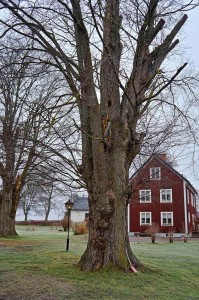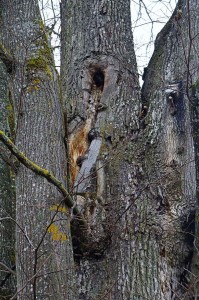After varroa mites arrived 5+ years ago feral bees disappeared. Actually around here we heard about a few before that, in the church tower and the old water tower at the railway. And when we heard about them it was in the sense of trouble, swarming every year and fear of foul brood they might spread.
For ferals to survive they must in some way deal with the mite, at least somewhat better than ordinary managed bees that need treatment more than once a year.
Last year reports of feral bees and swarms from them began to be heard of. I took a large one last one coming probably from the wall of the dog training center. It turned out to test high scores for VSH, varroa resistance. Another one was thriving this year in an abandon dead out hive where it had waxed the old dead bee cluster.
In July this year my friend got a call from a farm house, sited within range of our Elgon stock area. Bees were swarming from a very old big tree. To able to swarm it had to have been there and survived the winter. It was a small swarm with a laying queen. It covered only three combs. For the bees still in the tree it was good they took good bye to a small swarm. Or if this was half the size of the strength of the bees they had to be extremely hardy to survive the long winter we had.
And the bees were extremely small in size and flying like flies. They were noticeably smaller than the already small bees of my friend who live on 4.9 mm cell size and looked in color like our Elgon bees. The swarm is now wintered with good strength and have a very good temper.
Next season we will make a VSH test for varroa resistance and see how these bees will perform when they are enlarged to 4.9 mm cellsize.

